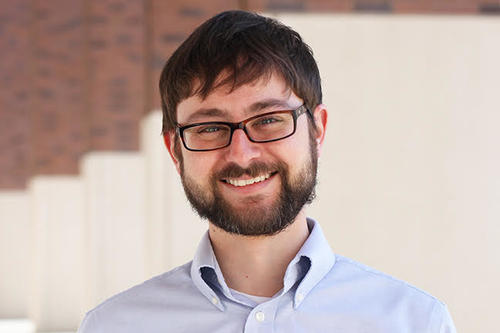
The State Health Access Data Assistance Center (SHADAC) at the University of Minnesota School of Public Health recently released a report on the evolving opioid crisis across the United States. Since 2010, rapid increases in deaths from illicit opioids have outpaced deaths from natural and semi-synthetic opioids. Additional data suggest that the overdose crisis may now be expanding beyond opioids.
Colin Planalp with SHADAC answers questions about opioid overdose death trends, how these trends are expected to evolve over time and how Minnesota compares to the rest of the country.
Q: What are opioids?
Mr. Planalp: All opioids are drugs that act on the opioid receptors in the pleasure centers of the brain. Opioids can be medically useful as painkillers, but they are prone to abuse because they can create feelings of intense pleasure. They also can be highly addictive, causing people to seek out and continue to abuse opioids even as it causes them harm. And because all opioids are chemically related and act similarly on the brain, a person who is addicted to an opioid may switch to another opioid if he or she can’t obtain their usual opioids. For example, a person may become addicted to prescription opioid painkillers after first receiving a prescription for a workplace injury, but if he or she is no longer able to obtain prescription painkillers from a doctor, an addicted person may try buying prescription opioids illegally or even switch to heroin.
Q: What are the most commonly misused opioids?
Mr. Planalp: There are multiple ways to classify opioids, but for understanding today’s opioid crisis, there are three types that account for most opioid overdose deaths: prescription painkillers, heroin and synthetic opioids.
Prescription opioid painkillers can be legally prescribed by doctors for treatment of short-term acute pain, such as from surgery, and long-term chronic pain, such as recurring pain from a back injury. Although prescription painkillers are legal, they also are commonly trafficked and abused illegally — sometimes by drug dealers, but frequently by stealing or “sharing” them with family or friends. Heroin is an illegal opioid that is derived from opioid poppies, smuggled into the U.S. by international drug traffickers and sold through the illicit drug trade. Synthetic opioids are a class of powerful man-made opioids that includes some legal painkillers, such as fentanyl. Increasingly during the past few years, however, international drug traffickers have begun smuggling illicitly manufactured fentanyl into the U.S. and selling it illegally because it is cheaper and more potent than heroin.
Q: What are the recent trends in opioid overdose deaths?
Mr. Planalp: Since around 2000, there have been two main waves in the opioid crisis. From around 2000 to about 2011, there was a steady increase in deaths from prescription opioid painkillers in the U.S. — nearly quadrupling from 1.0 to 3.7 deaths per 100,000 people. Since 2011, the growth in deaths from prescription opioid painkillers has slowed, but the rise in deaths from illicit opioids has more than made up for that. In 2017, the U.S. death rate from synthetic opioids was 9.0 per 100,000 people — nearly twice the rate from heroin (4.9) and more than twice the rate from prescription opioid painkillers (4.4).
Q: How does Minnesota compare to the rest of the country?
Mr. Planalp: Minnesota’s death rates from each of those three types of opioids — prescription opioid painkillers, heroin and synthetic opioids — are significantly lower than the U.S. rate. However, Minnesota has followed the same general trend in deaths from opioids, with steady increases from prescription opioid painkillers since 2000 and much more rapid growth in deaths from heroin and synthetic opioids since 2010. Like most of the country, there also is little sign that the opioid crisis is slowing. Although there are some early indications that death rates from prescription opioid painkillers and heroin may be plateauing, death rates from synthetic opioids appear only to be accelerating in recent years.
Q: What are you and your colleagues at SHADAC doing to advance knowledge of the opioid crisis?
Mr. Planalp: Because the opioid crisis is a rapidly evolving problem, we are carefully monitoring trends in opioid overdose deaths nationally, in Minnesota and in other states. One particular area of concern that we are studying is on recent signals that the opioid crisis may be expanding to other non-opioid illicit drugs — especially cocaine and methamphetamine. My SHADAC colleagues and I have documented recent increases in death rates from cocaine and methamphetamine-type drugs that mirror the rapid rise in deaths from illicit opioids, which is consistent with similar recent research from the U.S. Centers for Disease Control and Prevention that found cocaine and methamphetamine are often also involved in overdose deaths from synthetic opioids. Additionally, as states and the federal government undertake important efforts to curb the opioid crisis, we consult with state and federal officials on how to effectively conduct surveillance and measure the impacts of their work.
Colin Planalp is a senior research fellow in SHADAC, which makes data on the opioid crisis available at State Health Compare. His area of expertise is state health policy, with a particular focus on using data to inform policy decisions. He has conducted research and provided technical assistance to states and federal agencies on a variety of health policy topics, including innovative approaches to Medicaid expansion via Section 1115 demonstration waivers, multi-payer quality measure alignment as a strategy for supporting health care payment reform, and measuring the rapidly evolving national opioid crisis.
###
About “Talking...with UMN”
“Talking...with UMN” is a resource whereby University of Minnesota faculty answer questions on current and other topics of general interest. Feel free to republish this content. If would like to schedule an interview with the faculty member or have topics you’d like the University of Minnesota to explore for future “Talking...with UMN,” please contact University Public Relations at [email protected].
- Categories:
- Health




